Income and outgoings
I discussed beekeeping economics a couple of weeks ago.
I used some potentially questionable survey data on hive numbers, winter losses, honey yields and pricing, together with ‘off the shelf’ costs for frames, sugar and miticides.
Even ignoring the costs of travel and depreciation on equipment the ‘profit’ was not substantial.
Actually, it was just £102 per colony.
Consider the hard work involved, the heavy lifting, the vagaries of the weather and the amount of honey given away to friends and family.
You are not going to get rich fast (or at all) and the Maldives will have to remain a dream.
Most of us {{1}} keep bees for pleasure. However, a small profit from our endeavours can’t do any harm, and may actually do some good.
It might pay for a “sorry I was late back from the apiary … again” crate of beer/bunch of flowers {{2}} or for the new smoker to replace the one you reversed the car over.
So how do you fund the purchase of a crate of beer/bunch of flowers and a new smoker?
How do you increase the profit per colony from that rather paltry £100 to something a little more substantial?
It’s clear that to do this you need to reduce your outgoings and increase your income.
Income and outgoings
I’m going to restrict myself to the same range of outgoing costs and sources of income to those I covered on beekeeping economics.
I’m ignoring most equipment costs, depreciation, petrol, honey gifts to friends etc. All these reduce ‘profit’.
Here is the summary table presented earlier. Remember, this is for a four hive apiary, per annum {{3}}.
| Item | Expenditure (£) | Income (£) |
| Frames and foundation | 40.00 | |
| Miticides | 38.00 | |
| Food | 26.00 | |
| Honey (jars/labelling) and gross | 63.00 | 550.00 |
| Nucleus colony | 15.00 | 40.00 |
| Sub totals | 182.00 | 590.00 |
| Profit | 408.00 |
Cutting your food costs
Not a whole lot of leeway here I’m afraid.
Granulated sugar is probably the least expensive way of feeding your bees for the winter. Other than shopping around for the best price there’s not much option to reduce your outgoings.
However, before buying sugar it’s always worth asking your local supermarket for any spoilt or damaged packets. Supermarkets are under pressure to reduce waste and can usually be persuaded to support something as environmentally-friendly as local bees.
It costs nothing to ask.
Many beekeeping associations will arrange bulk purchases of either Ambrosia-type invert syrup or fondant. I’ll comment more extensively on this later.
Cutting your medicine costs
There are even fewer opportunities for savings if you want to use VMD-approved miticides.
I’ve discussed miticide costs extensively in the past. The figures are now a bit dated (and they omitted Apivar which was not available off-prescription at the time). However, it remains broadly true that the annual cost per hive is about the same as a jar of honey {{4}}.
If you’re using Api-Bioxal for midwinter trickling remember that you can safely dilute it to a final concentration of 3.2% (w/v), rather than that recommended on the label. Historically the UK has used oxalic acid at 3.2% and there’s no increase in efficacy at the higher strength. Full details are provided on the preparation of oxalic acid elsewhere.
At 3.2% w/v a 35g “10 hive” pack of Api-Bioxal will treat 15 hives.
There … at £11.95 a packet I’ve just slashed your midwinter treatment costs from £1.20 a hive to 80p.
Look after the pennies and the pounds will look after themselves 😉
Frames and foundation
First quality ‘off the shelf’ frames with foundation cost about £3 each. Obviously it makes sense to shop around and/or buy in bulk.
However, much more substantial savings are possible if you do three things:
- re-use frames after steaming and sterilising
- use second quality frames bought on supplier ‘sale days’
- use foundationless frames
If you nail and glue frames during construction they usually survive at least a couple of trips through a steam wax extractor. Yes, there’s some work involved in cleaning them up afterwards, but it’s no more work than building new frames each year.
Second quality frames are sold in packs of 50 for about £37.50 {{5}}. Of the hundreds I’ve used I’ve had few (~2% or less) that were unusable due to knots, shakes, splits or other weaknesses.
Foundationless frames take a bit longer to build and you have additional expenditure on bamboo or wire/nylon. However, this outlay is insignificant when compared with the saving made on foundation.
Remember that foundationless frames built with bamboo supports can go through a steam wax extractor and be put back into service. Don’t use wax starter strips. Use lollipop sticks or tongue depressors fixed with waterproof wood glue.
Purchased premium foundation is lovely stuff but freshly drawn comb on a foundationless frame is even better. Contamination-free, robust once fully drawn and much easier to clean from the frame when it eventually goes through the steamer.
Taken together – re-use, second quality and foundationless – I calculate that frames cost me ~25p each. This equates to a saving of £36.75 over a year {{6}}. Remember also that additional outlay on brood frames is needed to produce nucleus colonies (see below) where the savings would be £13.75 per nuc produced.
That’s more like it 🙂
A co-operative association intermission
Beekeeping associations often have co-operative purchasing schemes. Bulk purchasing reduces both individual item costs and (often substantial) P&P costs. These schemes are often organised to pass on the majority of the discount and retain a small amount of the savings for association activities.
The larger the association the greater the savings that can be made, and there’s no reason why neighbouring associations or regional groupings cannot act together.
Yes, of course, it takes some organisation. If your association doesn’t have such a scheme either find one that does or set up your own.
My beekeeping alma mater (Warwick and Leamington Beekeepers) offered excellent discounts on jars, honey buckets, foundation, Ambrosia, fondant and gloves … and probably a load of other things I didn’t take advantage of when I was a member {{7}}.
Products of the hive
That’s enough about outlay, what about income?
Honey bees make honey and bees.
Both are very valuable.
You can maximise income in two ways.
You can make more of either (or both) or you can sell them at a higher price.
You might even be able to achieve both.
I’ll deal with these in reverse order …
Maximising the prices of honey and bees
I’ve discussed honey pricing recently. If you’re producing a unique, high quality, well packaged product (and if you’re not, you should be) you need to price it accordingly.
That’s not the £4 a pound charged for the imported, blended, filtered, pasteurised, uniform, dull, available-by-the-tonne-anywhere rubbish stuff sold by the supermarkets.
Look in the delicatessens and local artisan outlets … you might be surprised.
£10 a pound is not unreasonable.
£10 a pound is readily achievable.
But let’s not be greedy, let’s assume a very conservative £7.50 a pound.
At £7.50/lb the average UK yield of 25lb of honey per hive equates to £687 (for the four hives) after paying out £63 for jars and labels {{8}}
Two factors contribute to the price you can realise for bees (which, for this exercise, means nucleus colonies):
- Timing – to maximise the price you need to sell when demand is the highest and supply is limited. This means early in the season. You therefore must overwinter nucs and ensure they are strong and healthy in mid-late April. Four to six weeks later there’s a glut of bees available as colonies start swarm preparation … prices drop precipitously. Nucs are easy to overwinter with a little TLC.
- Quality – with a small number of colonies it is not easy to improve your stocks. However, by judicious replacement of poorly-performing queens/colonies you should be able to produce perfectly acceptable bees for sale. Don’t try selling bad bees – chalkbrood-riddled, poorly behaved, patchy brood or diseased (high Varroa, overt DWV etc.).
If you are selling one or more nucs you should expect to allow them to be inspected before the sale. Just like honey tasting, nothing is more convincing than trying the product.
Maximising the amount of honey and bees
All other things being equal {{9}} stronger colonies will produce more honey and generate more ‘spare’ nucs.
Compare a productive commercial colony and an unproductive amateur colony at the height of the season. What’s the difference?
The productive colony is on a double brood box underneath three or four full or rapidly filling supers. There are 16+ frames of brood and the beekeeper has already split off a nuc for swarm control.
In contrast, the unproductive colony has about seven frames of brood in a single brood box topped by an underwhelmingly light super. There’s little chance of producing a spare nuc this season … or much honey.
But at least they might not swarm 🙂 {{10}}
Generating these strong colonies requires good genetics and good beekeeping.
With further good management the productive colony could produce another couple of supers of late-season honey and at least one more nuc for overwintering.
How does that help the bank balance?
Let’s assume an ambitious-but-not-entirely-unrealistic one nuc per colony and 75lb of honey per annum in total (being sold at £175 per nuc and £7.50 a pound for honey). Honey ‘profit’ for the four colonies in our hypothetical apiary works out at £2061 {{11}} with a further £700 for the sale of four nucs at £175 each {{12}}.
That works out at a very much more impressive £690 per colony.
Minimising losses
But wait, surely we have to use some of those valuable nucs to make up for the 25% overwintering colony losses that the average UK beekeeper experiences?
No we don’t 🙂
If you have the beekeeping skills to manage strong colonies you almost certainly also have below average overwintering losses.
And that’s because strong colonies are, almost by definition, healthy colonies which have low mite and virus levels. And, as we’ve seen time and time again, low virus levels means reduced winter losses.
This minimises the need for nucs to maintain overall colony numbers and so maximises the nucs for sale 🙂
For the sake of finishing this already overly long post, let’s assume overwintering colony losses are 12.5% (because it makes the maths easier … 10% or lower is readily achievable) rather than the 25% national average.
That being the case, for our four hive hypothetical apiary, we’ll need one replacement nuc every two years. Therefore, over a four year period we might generate 16 nucs and use just 2 of them to replace lost colonies.
Kerching!
Here are the figures for our hypothetical four colony apiary. These assume good bees, good beekeeping, low winter losses, good forage, good weather and a following wind.
I’ve assumed savings are being made where possible on frames and foundation, but also increased the number of frames (and miticides) needed to reflect colony size and strength.
| Item | Expenditure (£) | Income (£) |
| Frames and foundation | 7.50 {{13}} | |
| Miticides | 76.00 {{14}} | |
| Food | 52.00 {{15}} | |
| Honey (jars/labelling) and gross | 189.00 {{16}} | 2250.00 {{17}} |
| Nucleus colony | 5.00 {{18}} | 612.50 {{19}} |
| Sub totals | 329.50 | 2862.50 |
| Profit | 2533.00 |
Per colony the overall profit is £633/annum (cf £102/colony/annum for an ‘average’ hive and beekeeper).
These figures are not unrealistic (though they’re not necessarily typical either).
They won’t be achieved every year. They are dependent upon good forage, good weather and having the beekeeping skills needed to maintain strong healthy colonies.
They might be exceeded in some years. With good forage and a good season 100+ pounds of honey per colony can be achieved.
You have no control over the weather {{20}}, but you can influence the other two factors. You can place your bees on better forage and you can continuously try and improve your skills as a beekeeper.
And learning how to maintain (and keep!) really strong healthy productive colonies is demonstrably a very valuable skill to acquire.
E & OE
Just like in the previous article, I’ve made all sorts of assumptions and cut all sorts of corners.
Managing big strong double-brood colonies producing a nuc each every year and topped by at least three supers inevitably means investing in lots more brood boxes, supers and nuc boxes {{21}}.
It also means a lot more work.
Extracting and jarring hundreds of pounds of honey takes time. It also benefits from some automation … an extractor, a creamer, settling tanks, a honey processing room, a warm room for supers etc.
But that lot is not needed for our well-managed four hive hypothetical apiary.
The other things I’ve deliberately omitted are alternative ways of managing colonies for profit. For example, as suggested by Calum in a previous comment, propolis is a very valuable product of the hive. You can split a strong colony very hard to generate 6-10 nucs (but no honey). You can rear queens (very easily) and you can sell wax.
You could even produce Royal Jelly …
And it’s that endless variety and options that make beekeeping so fascinating.
{{1}}: Both qualified in terms of UK beekeepers and (hopefully) readers of this site.
{{2}}: Delete as appropriate and with apologies for stereotyping.
{{3}}: I don’t have time or space to rehash all the assumptions led to these figures – essentially it’s an average beekeeper, with average honey yields and average losses paying standard prices for just about everything.
{{4}}: Api-Bioxal is much less expensive (~65p per hive), but for maximum efficacy it’s use is limited to the broodless midwinter period.
{{5}}: If I remember correctly … I’ve not bought any for a couple of years. This was the price for bundles of 50 DN5 brood frames.
{{6}}: This assumes you replace 13 brood frames a year costing ~£40 with the same number of foundationless frames for £3.25.
{{7}}: I miss both my friends there and the co-op purchasing scheme :(
{{8}}: And remember that you might achieve a saving on the jars if you purchase them as part of a co-operative scheme.
{{9}}: Forage, length of the season, weather etc.
{{10}}: I bet they will!
{{11}}: 75lb x 4 = 300lb @ £7.50/lb minus £189 (3 x the £63 we’d previously calculated was needed for jarring 100 lb of honey) for jars and labels.
{{12}}: I’m ignoring the cost of frames here as they’re 25p each (see above) and you need 20 for the four nucs
{{13}}: Four double brood colonies require 26 new foundationless brood frames per year at 25p each.
{{14}}: Assuming double brood colonies use double the amount of miticides.
{{15}}: I’ve doubled this to reflect stronger colonies and the nucs being overwintered.
{{16}}: 300 lb of honey requires 300 jars at £63/100.
{{17}}: 300 lb of honey at £7.50/lb
{{18}}: Four five frame nucs per year at 25p per frame.
{{19}}: Assuming 16 nucs produced over four years with two being used to replace overwintering losses.
{{20}}: Please correct me if I’m wrong.
{{21}}: The cost of which I’ve completely ignored.

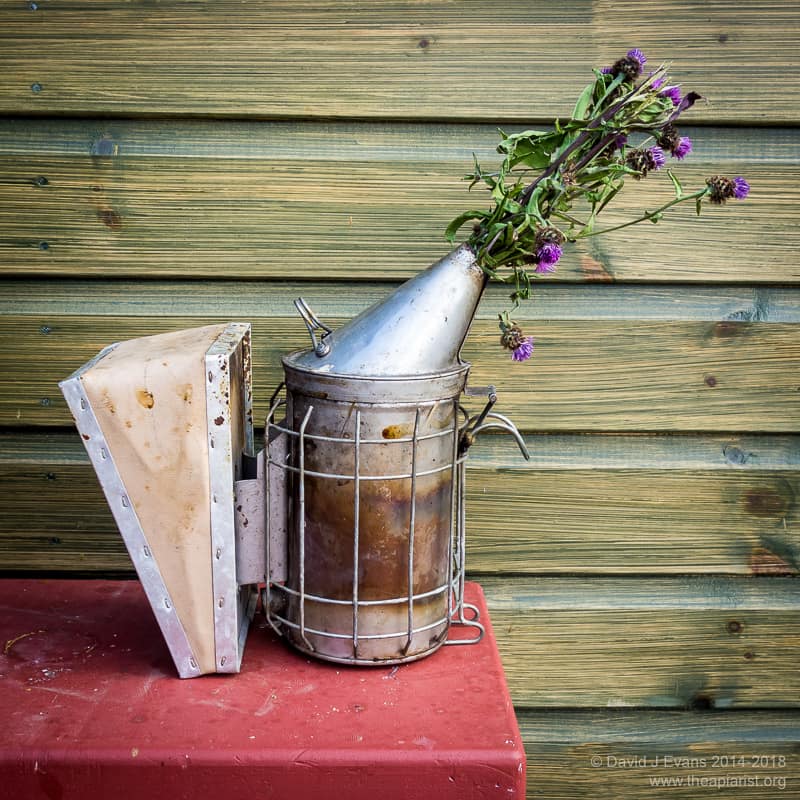
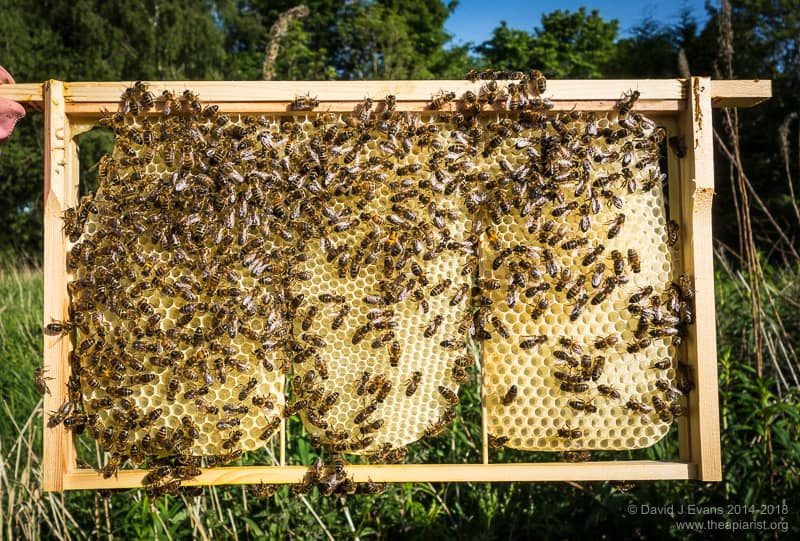
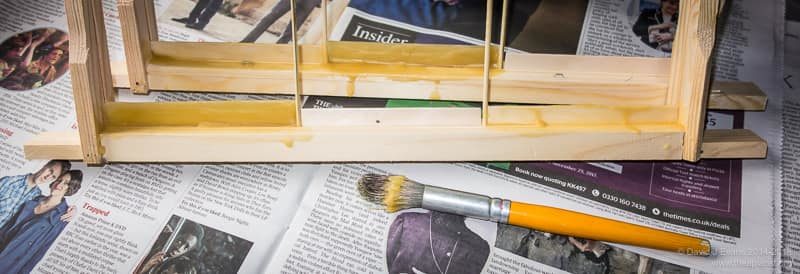
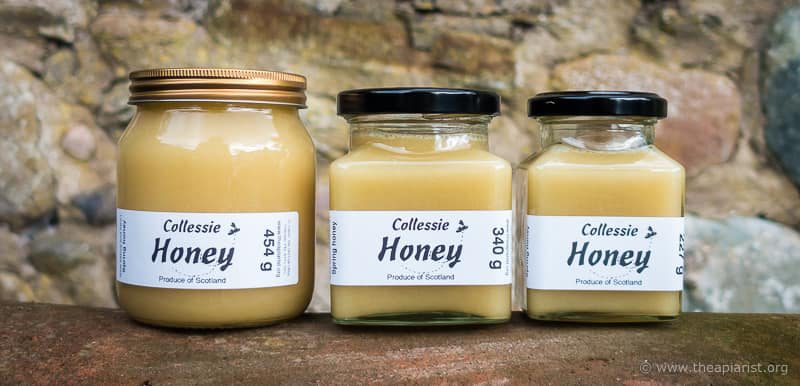
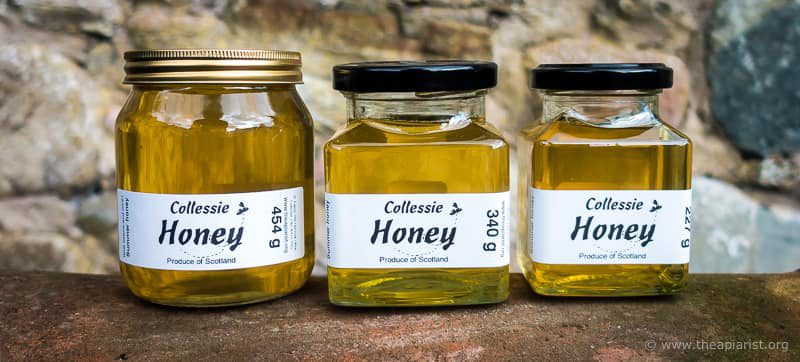
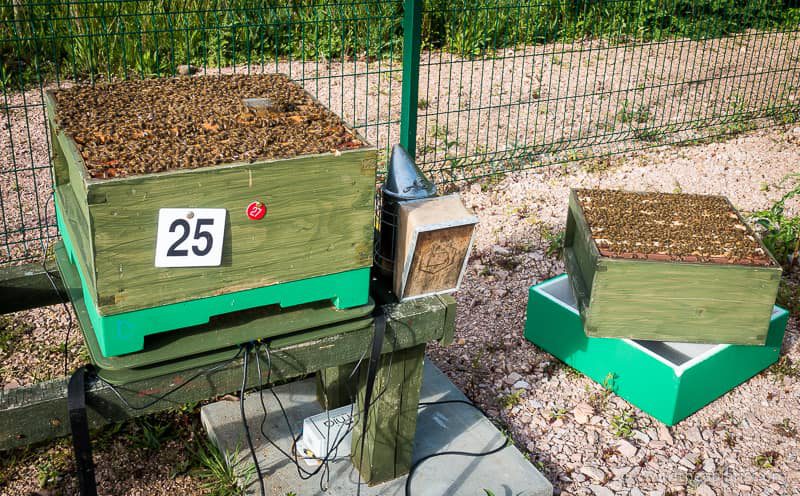
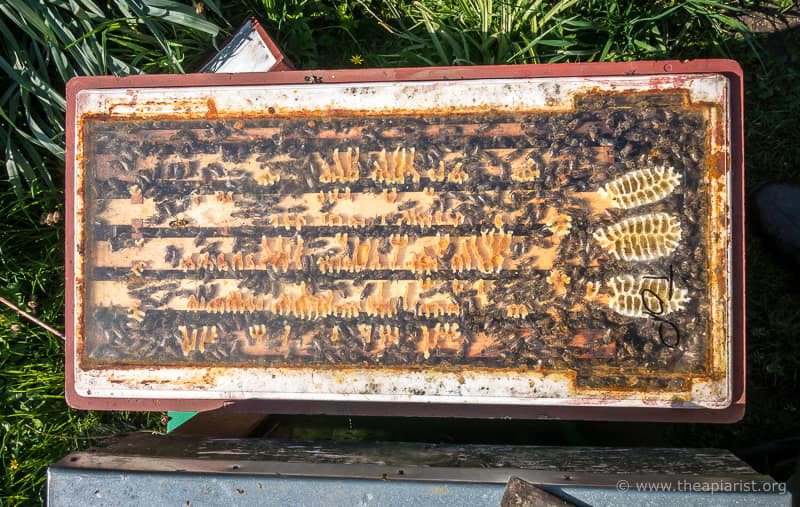
Join the discussion ...